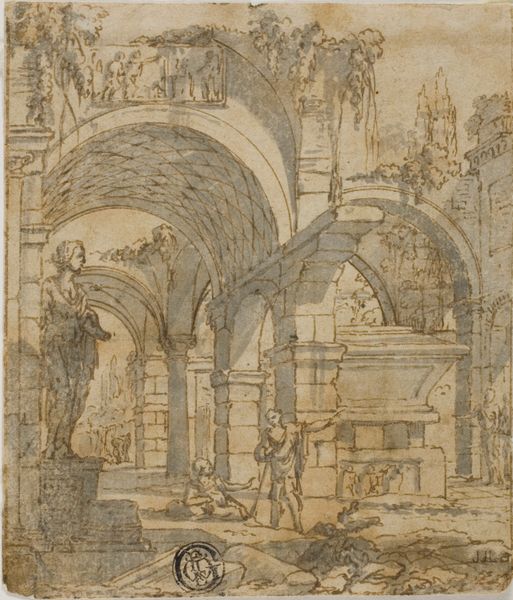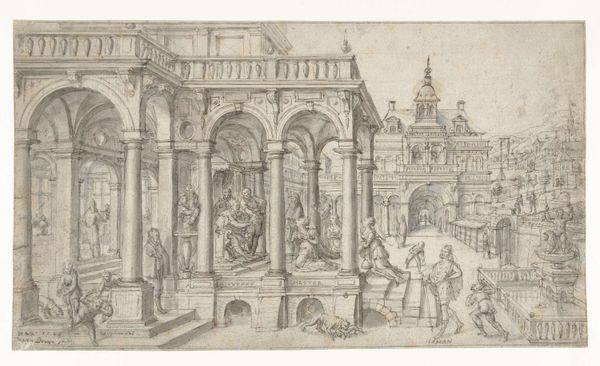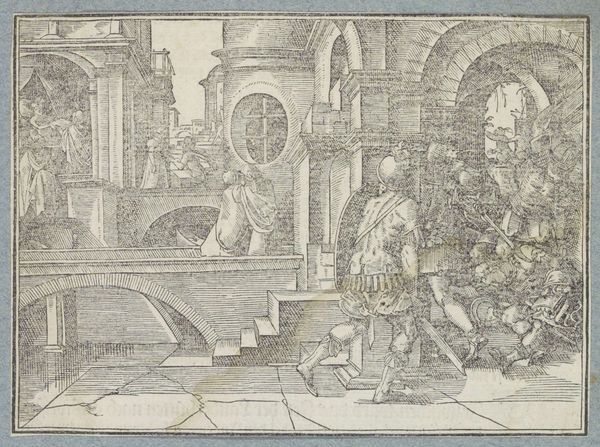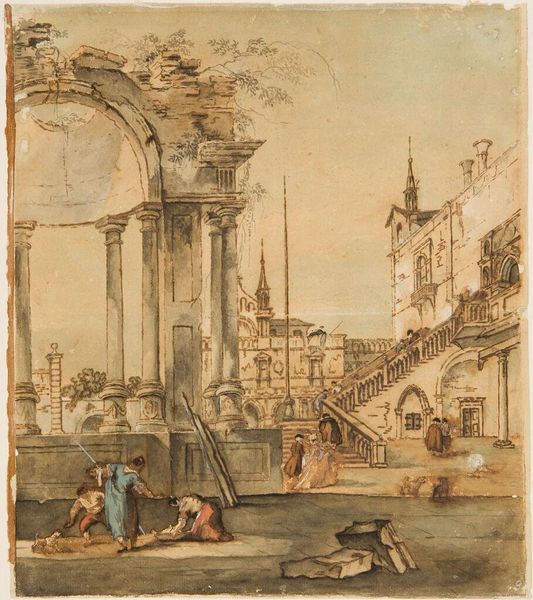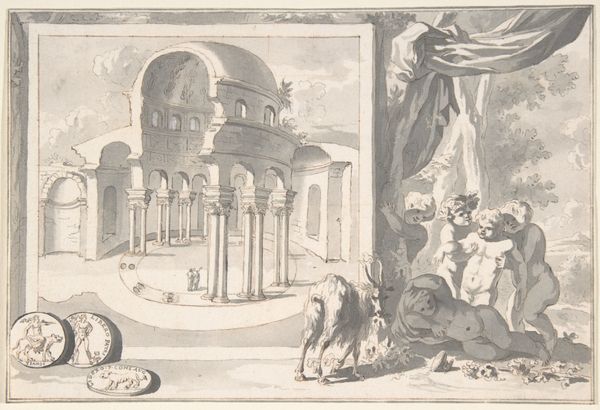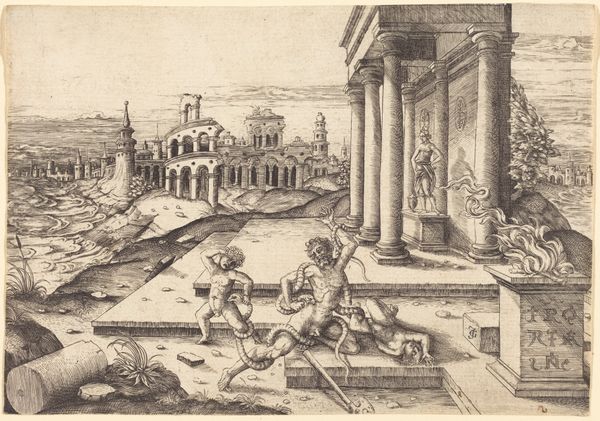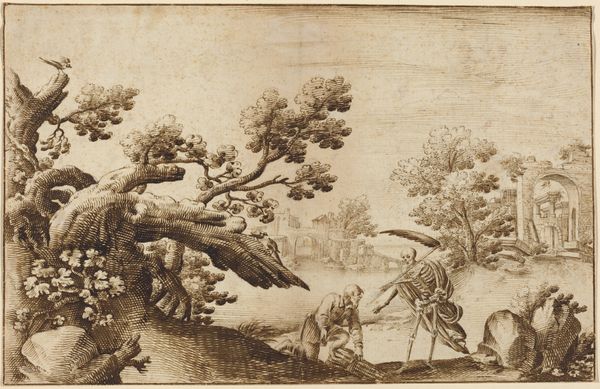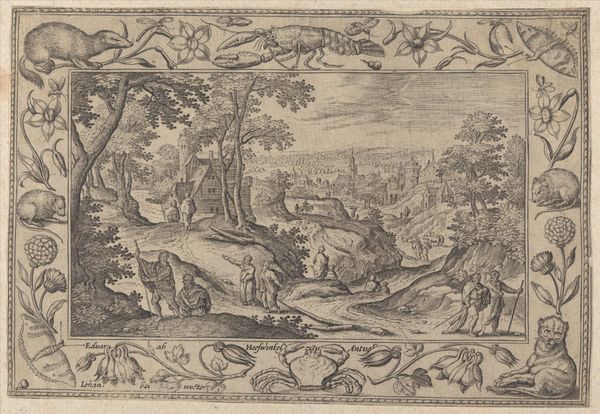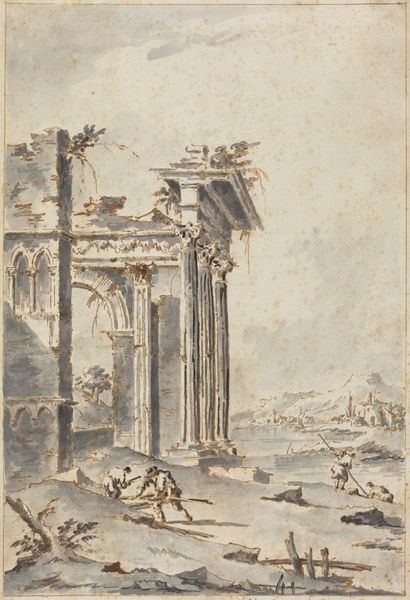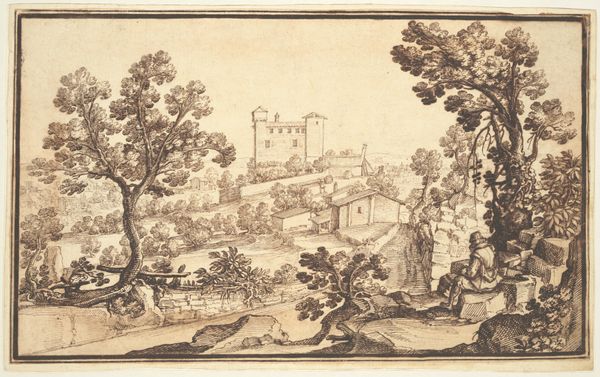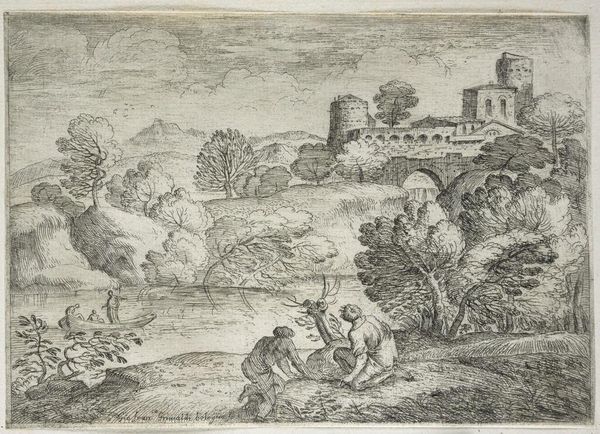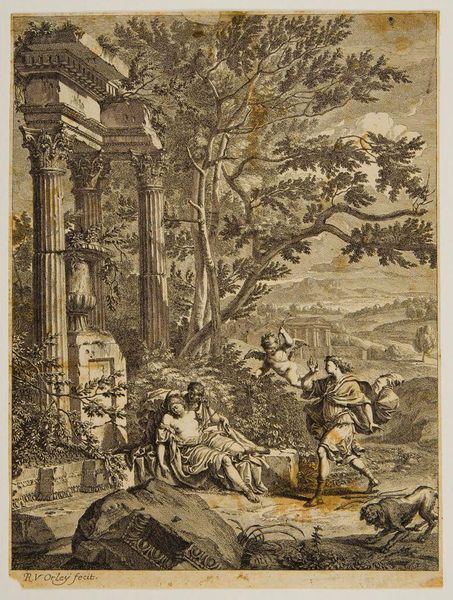
drawing, paper, ink
#
drawing
#
narrative-art
#
landscape
#
perspective
#
figuration
#
paper
#
11_renaissance
#
ink
#
coloured pencil
#
underpainting
#
history-painting
#
northern-renaissance
#
watercolor
Dimensions: height 275 mm, width 425 mm
Copyright: Rijks Museum: Open Domain
Curator: What grabs me about this piece is the sheer theatricality of it. It's like looking at a stage set for some grand, biblical opera. Editor: Exactly! What we have here is Cornelis Floris's "Jacob ontvangt de zegen van Izaäk; Jacobs ladder," a drawing from between 1524 and 1575. It is a pen and ink drawing on paper held in the Rijksmuseum collection, depicting two scenes from the Book of Genesis. On the left, we see Isaac blessing Jacob, while on the right, Jacob dreams of the ladder to heaven. Curator: I love the Renaissance take on perspective, how the architectural elements frame both narratives. It's almost like looking into a dollhouse diorama. The figures feel so small within these enormous spaces, both interior and exterior. Editor: Right, it places emphasis on how theological and dynastic destinies unfold within, and are shaped by, architecture and landscape. Consider, too, how inheritance, identity, and divine destiny were conceived through patriarchal systems in this historical context. Jacob essentially deceives his blind father to steal his brother Esau's birthright, a deeply fraught act made even more complex by its supposed divine justification through Jacob's ladder dream. Curator: I'm also intrigued by how the artist renders both interior and exterior spaces. We’ve got a very opulent domestic scene contrasted against a pastoral landscape. It feels both intimate and expansive all at once, even uncanny somehow. Like a dream…or a skillfully executed deception. Editor: Precisely. And it highlights a central tension: Is Jacob’s ascent earned through integrity, or is it enabled through manipulation and opportunism? How complicit, then, are structures of power in determining spiritual and earthly destinies? The architectural perspective mirrors this: meticulously crafted, yet guiding our eye to narratives ripe with ethical ambiguity. Curator: There is such precision in rendering that architectural detail and yet a real softness, like a dream, too, as you said. Editor: Yes. Reflecting on these questions opens new pathways to consider how artworks, like Floris's drawing, are implicated in reinforcing or questioning power dynamics across time. Curator: It's truly remarkable how much narrative is packed into a single drawing. Food for thought, definitely. Editor: Absolutely.
Comments
No comments
Be the first to comment and join the conversation on the ultimate creative platform.
